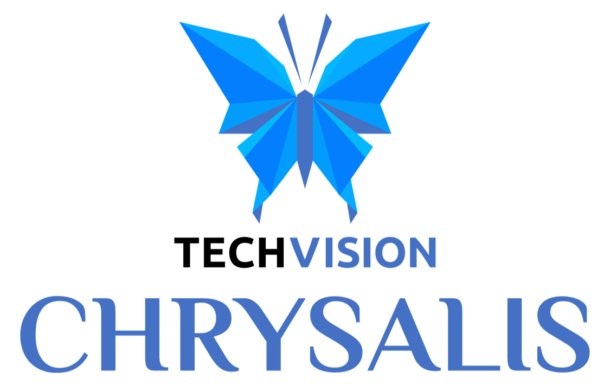
Patrick McClory, Principal Consulting Analyst
Patrick McClory has built and driven value into new and existing companies as a leader in AWS’ Professional Services organization, DualSpark, and Datapipe. He’s helped hundreds of companies grow and mature ‘in the Cloud’ as a leader, developer, consultant, and more. He has driven strategic product development for organizations and is leveraging his automation, high scale and outcomes-oriented approach to drive change in the Business Intelligence space. Patrick McClory has been writing code, managing DevOps, designing scalable application infrastructures and coaching executives on technical strategy and implementation for over fifteen years.
show more
As COO and CTO of DualSpark, Patrick served as an expert Amazon Web Services consultant, helping hundreds of enterprise and mid-market clients capitalize on the benefits of cloud architecture and design with modern and innovative software, infrastructure, and automation strategy leveraging solutions from AWS.
At Datapipe, Patrick assumed the role of SVP, Platform Engineering where his expertise is put to good use overseeing Datapipe’s global Automation and DevOps team. In this role, Patrick helped to build next-generation platform and products to accelerate, support and enable large scale and multinational enterprises along their technology maturity journeys.
show less
Expertise:
- DevOps
- Microservices
- Containerization
- Data Analytics
- Cloud
Workshops:
- Adopting a Microservices Architecture
- DevOps for the Enterprise
- Making Containers Enterprise Ready
Recently Published Research
Microservices Enterprise Level-Set
 This report is a level-set for enterprises considering microservices or alternative approaches to traditional application development and deployment. There has been a multitude of efforts over the years to build better software and services faster and less expensively. The microservices trend has gained increased visibility of late as organizations such as Google, Amazon, Netflix and others have rapidly deployed services at massive scale leveraging agile development teams to build small, loosely coupled services.
This report is a level-set for enterprises considering microservices or alternative approaches to traditional application development and deployment. There has been a multitude of efforts over the years to build better software and services faster and less expensively. The microservices trend has gained increased visibility of late as organizations such as Google, Amazon, Netflix and others have rapidly deployed services at massive scale leveraging agile development teams to build small, loosely coupled services.
Enterprises are evaluating and embracing an overarching movement from traditional monolithic applications to smaller, autonomous services that work together under the umbrella of a microservice-based architecture. This allows for small, independent teams to develop business-focused services without waiting for all other services to be completed. The goal is for this approach to result in efficient development, more consistent and frequent updates, and greater flexibility.
At TechVision, we see microservices as enabling three specific, highly sought-after capabilities within the enterprise space: Faster Ideation-to-Realization, Lower TCO via Service Reuse, and Lower Operational Risk. With these three outcomes exists a re-balancing of assumptions at an engineering, financial and organizational level that, when effective, can lead to more integrative and even ‘DevOps’-like practices within the organization. We will continue to evaluate these dimensions as we dive deeper into the ‘what’ and ‘how’ of this architectural pattern throughout this report.
A Practical Guide to DevOps
 From the first “DevOps Days” events,to current marketing and trends in the space;the concept of DevOps is focused on improving the flow of software from development to production by reducing or even removing barriers between the teams responsible for handling the process.
From the first “DevOps Days” events,to current marketing and trends in the space;the concept of DevOps is focused on improving the flow of software from development to production by reducing or even removing barriers between the teams responsible for handling the process.
It is important to understand that practical DevOps is not the utopian vision that some vendors and even thought leaders often portray. Simply put, DevOps is not a cure-all, it will not solve world-hunger nor is it a ‘get out of jail free’ card. That said, with proper planning and alignment DevOps can offer distinct benefits to the enterprise.
This practical enterprise DevOps guide builds on three basic perspectives; we look at DevOps from a tactical point of view, a strategic perspective while considering the culturalaspects essential to successful DevOps programs. Key characteristics of each perspective include:
- Tactical DevOps: A pervasive and disruptive use of automation
- Strategic DevOps: A means of aligning all the constituents in the software development lifecycle–including those that create and those that manage software
- Cultural DevOps: A shift in how people interact in-and-around technical work as a result of the tactical and strategic outcomes
This report further develops these aspects and contains a set of pragmatic adoption guidelines and common hurdles that organizations will need to address as they progress with their DevOps program. This includes the organizational and cultural changes, the governance challenges associated with these new models, the integration and migration issues and approaches to building the right engineering and technical culture while ensuring the focus on business outcomes.
Upcoming Research

© 2019 All Rights Reserved

